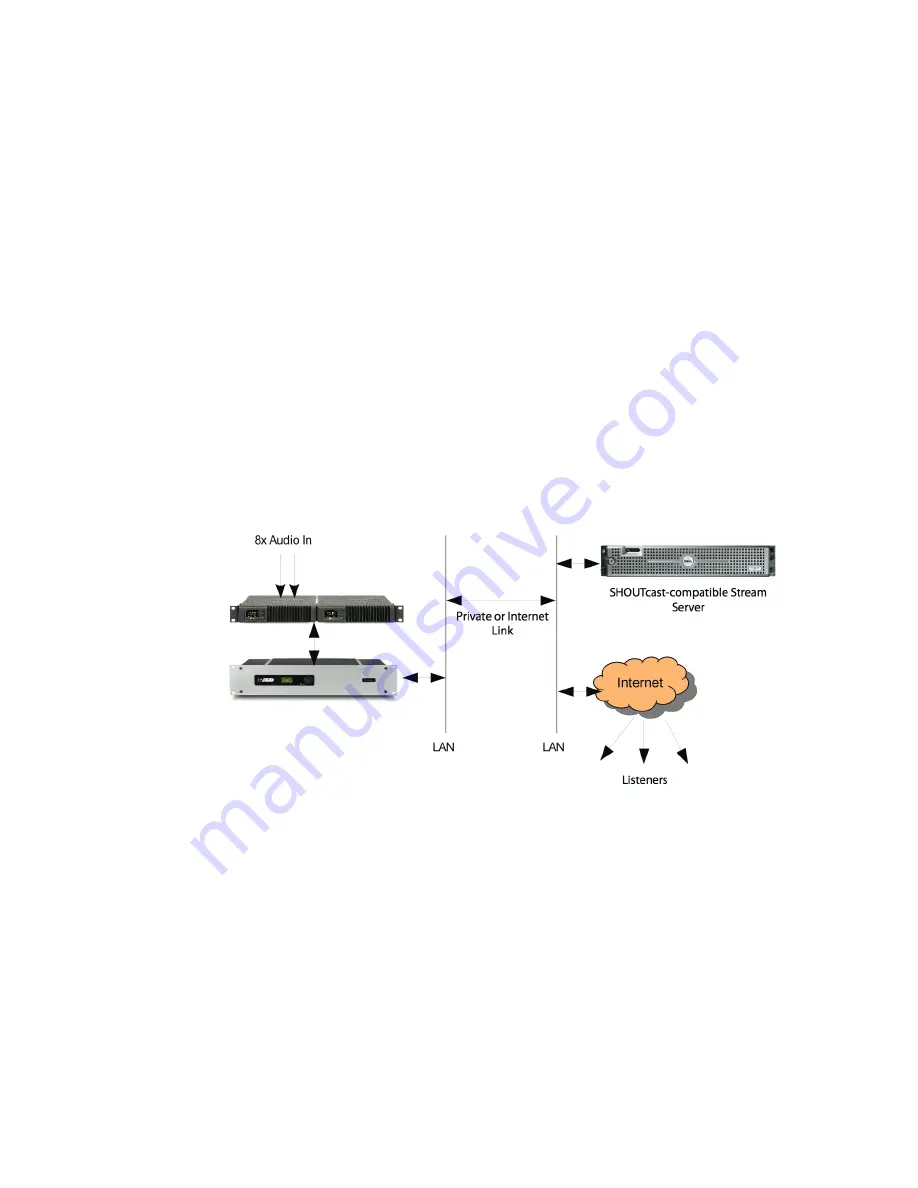
SECTION 5 |
27
STREAMING
5
Streaming
When used with an appropriate SHOUTcast distribution server, Zephyr iPort PLUS can be used as a simple and
reliable encoder for Internet or internal audio distribution. Because the iPort generates standards-based MPEG
streams, a wide variety of internet and mobile devices can be used for listening.
For delivering audio over a LAN or private network, the encoder and server can be together in the same rack. For
public streaming over the Internet, the encoder typically runs in the place where the audio is generated (e.g. a
studio) and the server is in a place where a lot of bandwidth is available such as an Internet co-location site.
Streams that are served by SHOUTcast protocol servers can be heard on Winamp, Apple iTunes, XMMS, VLC,
Foobar, Microsoft Windows Media Player, and many other PC software players.
The diagram above shows a simple set-up for streaming. A Livewire xNode AoIP interface provides live audio
input, which connects directly to the Livewire Ethernet jack on the iPort. The iPort’s WAN jack connects to a
network (typically the Internet via your router) that leads to a remotely located streaming server. That streaming
server provides streams to listeners over the Internet.
Many variants are possible. For example, a Livewire PC driver could provide the source audio rather than xNode
hardware (remember, there must be an xNode somewhere on the network to provide clock synchronization).
An installation which already has Livewire equipment would not need another xNode dedicated to the iPort - you
would just select channels you want to stream directly from the Livewire network.
If you are planning to make really large scale public broadcasts via the Internet, you may want to host your broad-
cast through a Content Delivery Network (CDN).
This type of installation would be similar to the one diagrammed above. In this case, one LAN ties together the
xNode, Zephyr iPort PLUS, as well as an Omnia® audio processor. Another network links to the WAN (presumably
with a firewall in the picture). This offers good security since the Livewire network is isolated from the WAN. It
would also be possible to use a single network on the studio side. In this case, the firewall would be responsible for
protecting the Livewire network.






























